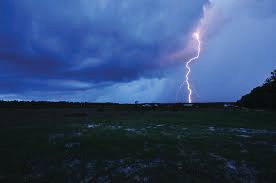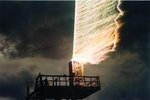UF researchers base international lightning research at Camp Blanding
CAMP BLANDING – Not all the loud blasts from the Camp Blanding area are military explosions. Some are part of the University of Florida’s research on one of nature’s most potent …
This item is available in full to subscribers.
Attention subscribers
To continue reading, you will need to either log in to your subscriber account, below, or purchase a new subscription.
Please log in to continueDon't have an ID?Print subscribersIf you're a print subscriber, but do not yet have an online account, click here to create one. Non-subscribersClick here to see your options for subscribing. Single day passYou also have the option of purchasing 24 hours of access, for $1.00. Click here to purchase a single day pass. |
UF researchers base international lightning research at Camp Blanding
CAMP BLANDING – Not all the loud blasts from the Camp Blanding area are military explosions. Some are part of the University of Florida’s research on one of nature’s most potent forces – lightning.
The university’s International Center for Lightning Research and Testing was originally created after one of the state’s worst droughts to find solutions for wildfires triggered by lightning strikes. But there was one problem: scientists had to wait for passing storms to do their work.
Martin Uman, chair of the College of Engineering’s electrical and computer engineering department, told the university’s Explore magazine his group had to create a way to accelerate Mother Nature’s fury.
“It was a horror,” Uman said. “We were all set to go. Everybody was there.”
When storms blew through, strikes were unpredictable and lasted less than a second. Also, lightning is thunderous and 50,000 degrees.
Uman and the University of West Florida’s professor of electrical engineering Doug Jordan set up a high-speed camera at Camp Blanding for optical measurements. But he only had 15 good images after 15 years of research.
Engineers at Florida launched skinny rockets 2,400 feet from batteries of steel tubes into a storm cloud to induce a lightning strike.
According to the university, researchers recorded as many as 35 strikes one summer by firing rockets from a 35-foot wooden structure topped by a lightning rod on the base.
Not only will ongoing research help scientists better prepare for dangerous conditions, but it can also help avoid emergencies like small airports losing power and keeping people from being killed by strikes. Each year, about 150 people die by lightning and strikes create more than $500 million in insurance claims, according to the university.
“When we understand the mechanism, we will try to design a better lightning protection system,” said Vladimir Rakov, a UF electrical and computer engineering professor.
Research at the lab has resulted in more than 100 published papers on the different aspects of lightning, mainly how electric and magnetic fields are related to currents.
Lightning research has come a long way since Benjamin Franklin tied a key to a kite he flew in a storm. The Camp Blanding facility is considered one of the premier research centers in the world.
“Every year, we’re able to do fancier and fancier stuff and learn more and more than we could before,” Uman told Explore.










